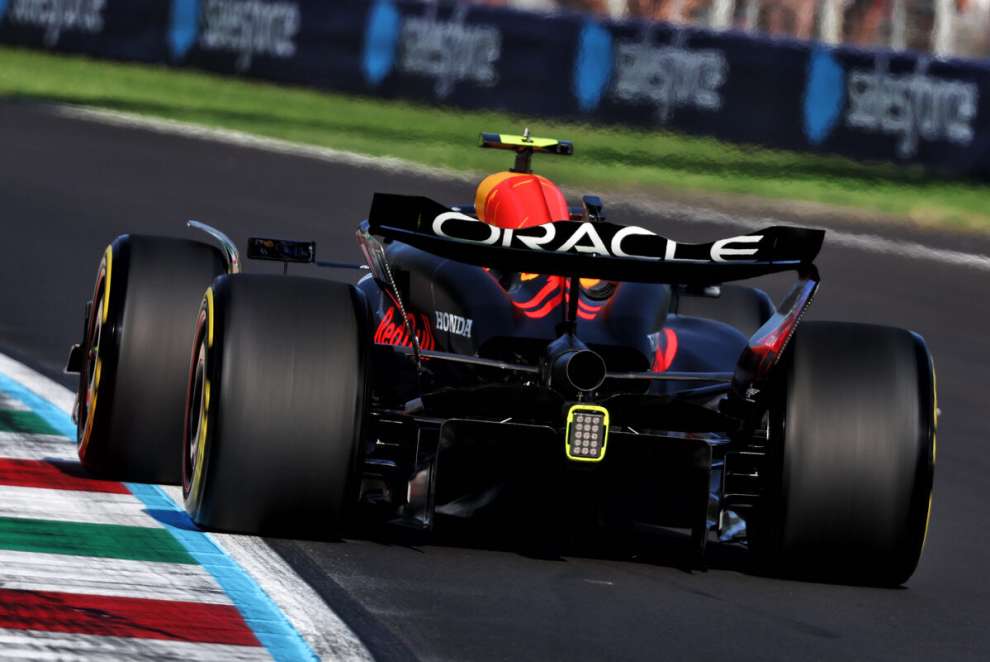By Carlo Platella
A new championship begins in Baku. The European Formula 1 season ended with Monza, a period where McLaren emerged as the most competitive car on average on the circuits of the Old Continent. One more reason to expect the Woking team to be back on top in Azerbaijan, which opens a phase of the season far from the spacious European circuits and their wide-radius curves, presenting a mix of tracks and weather conditions that are as varied as ever.
McLaren on the attack
We start from Baku, on a track that is certainly not as fast as the one in Monza, with its 215 km/h average per lap against the 260 of the Brianza racetrack. This does not change the fact that with its long straights the Azerbaijani circuit requires a low aerodynamic load layout, a configuration that for McLaren it is no longer a tabooas it could have been a year ago. The Woking team also has a wide range of options for low-downforce wings and beam wings, renewed between Spa and Monza, unlike rival Red Bull.
McLaren’s greatest asset but the wide operating window of the MCL38 remains, which is invaluable on a track where conditions are typically varied. The asphalt temperature is one of these, with the shadows of the buildings delineating zones of different temperatures and grip at various points on the track. Not to be overlooked is the wind, which is always present and which the buildings channel in different directions.
Ferrari confident, Red Bull an unknown quantity
Among those who are looking at the Azerbaijani event with optimism is also the Cavallino. The city track features a homogeneity of slow, short and ninety-degree curves, where the qualities of traction and mechanical grip released by the suspensions emerge, aspects in which Ferrari is not afraid of comparison with McLaren. In general, the long, medium-high speed bends typical of European tracks are absent, thus removing an area where in the summer the Reds were still somewhat behind the competition.
But the wait is all for Red Bullfresh from the Italian defeat. In Monza the perfect storm materialized for the world champions, who are unlikely to experience such a critical weekend again. This does not change the fact that in Milton Keynes they continue to seek a solution to the balance problems of the RB20. In this Baku could be of helpwith the presence of corners in a similar speed range that makes it easier to find a satisfactory balance. On the other hand, running in low-downforce configuration again will not allow the RB20’s character flaws to be masked with extra grip.

Finally there is Mercedesfor which the circuits that enhance traction and rear tyre management are no longer as prohibitive as they may have been at the start of the year. In Brackley, however, they are dealing with a car that is still very sensitive to external conditions, responsible for the inconsistent performance of the W15, winner in July and far from the podium positions when it returns from the break. It is impossible to exclude the Silver Arrows from the fight for victory in Azerbaijan, but much will depend on the effectiveness of the set-up developed at the venue.
Degradation on the rise
In Baku Pirelli will once again propose the softest compounds in its range, C3, C4 and C5, which, combined with a smooth and low-grip asphalt, will make it very difficult to extract the peak performance on a single lap. The Grand Prix being held in September instead of April also brings with it higher ambient temperatures, which should increase rubber degradation of tirestypically low on the Azeri runway.

As always, tyre management and exploitation will be among the key aspects of the weekend, but so too will braking incisiveness. In Baku, in fact, there will be as many as 11 detached7 of which record decelerations exceeding 4 g. The peak is reached in the braking sections of curves 1 and 3, where up to 4.7 g are expected, values that push Brembo to classify the Azerbaijani citizen with a severity of 4 out of 5 for the braking system.
The variables
The 2024 season teaches how choices and episodes can make the difference in a fight for hundredths of a second. The most important variable in Baku is Exploitation of the wake effect on the very long start-finish straight, more than 2 kilometres long, where team games and skirmishes between the teams in qualifying have been seen several times in the past.

The position on the starting grid becomes very important on a track where overtaking is not particularly easydespite the long DRS zones. To overtake, a high top speed is not enough, but a car that can stay close to the car in front even in the twisty central sector. If passing on the track is not an option, the frequent Safety Cars and Virtual Safety Cars offer precious opportunities, capable of making the Azerbaijan Grand Prix one of the liveliest of the year.
#McLaren #attack #Red #Bull #watch #Ferrari #expect #Baku
